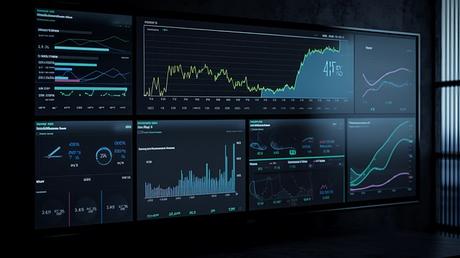
Predictive analytics is the practice of using historical data to make predictions about the future, including events, behaviors, and outcomes. It typically relies on some combination of artificial intelligence, machine learning, and/or statistical algorithms.
In recent years, the field has grown exponentially, in large part due to advances in technologies like artificial intelligence. The use of predictive analytics model has exploded across virtually all sectors and industries, for a variety of purposes.
How Predictive Analytics Can Give You a Competitive Edge
One of the fields in which predictive analytics has had the most impact is digital marketing. That is in large part because it can make all sorts of predictions about human behavior. Predictive analytics can determine what individual people like, what they'll buy, and how much they'll spend.
Also it can also support data-driven decision-making, by detecting broader trends and patterns. Here are just some of the many potential use cases for predictive analytics in marketing.
1. Customer Segmentation
Predictive analytics can be used to determine or assess shared characteristics between large sets of customers, prospects, or audiences. It can then make predictions about their potential future behaviors, actions, needs, or values.
For example, it can assess who might be willing to make a purchase in the next month. These predictions can then be used to build predictive audiences: that is, divide them into groups of people likely to exhibit the same behavior.
In marketing, this type of audience-building is usually called customer segmentation. Customers are split up into groups and targeted with different emails, different landing pages, different ads, etc. based on their data.
Without predictive analytics, customer segmentation is relatively limited: obvious groups like men and women or urban vs. rural customers receive different messaging. Predictive analytics make it possible to deliver a much more tailored experience.
2. Personalized Recommendations
Going a step further, predictive analytics can be used to give each customer a wholly different experience of a brand. Instead of just serving them one version of an email or ad, it can deliver infinite potential combinations of personalized content.
A shopper who has made certain purchases, or clicked on certain ads in the past, might receive recommendations based on those behaviors. If they clicked on an ad for beach towels, they might get an email about flip flops.
As a company or marketer gathers more historical data about a person or segment, predictions become more advanced and accurate. A brand can learn what colors, styles, flavors, genres, and scents a customer likes and recommend similar items.
Top brands like Netflix, Stitch Fix, and Amazon all famously use predictive analytics to offer personal recommendations. They know what movies, clothes, books, and more a customer might like, often before the customer realizes it.
3. Lead Scoring and Churn Prevention
It's also possible to use predictive analytics to make larger sales or foster long-term customer loyalty. For example, predictive analytics can be used to prioritize leads based on their likelihood of conversion.
If a sales rep knows which leads might be ready to convert, and when, they can prioritize those calls. They also know which calls to hold off on, so they're less likely to risk badgering a prospect who needs more time to decide.
Predictive analytics also plays a role in churn prevention by identifying groups or individuals at high risk for churn. It can also create targeted retention strategies to keep these high-risk customers from leaving, including strategies like discounts and loyalty offerings.
Some predictive analytics models are especially useful at studying the patterns behind customer churn and helping businesses understand why customers leave.

4. Demand Forecasting and Inventory
In industries that deal in physical goods, predictive analytics can play a vital role in demand forecasting and inventory planning. It can predict how much of a given good will be sold and determine when to order more inventory.
Predictive analytics can also make sense of supply chain disruptions, like materials shortages and weather events, that impact production and transportation. It can project how different scenarios will impact the availability of goods or customer demand.
This matters for marketers, who need to determine when to run promotions. For example, they need to know not to push sales when there won't be enough inventory to meet demand and fill orders.
On the other side, they need to know when to run campaigns to speed up slow sales periods or clear excess inventory. Demand forecasting can also help marketers make predictions about how new products will perform and how best to promote them at launch.
5. Pricing Optimization
Besides helping marketers determine the timing and content of promotions, predictive analytics can also help them set competitive prices.
Predictive software tools can constantly monitor market data to find out what competitors are charging and adjust pricing accordingly. Some programs make recommendations about pricing, while others adjust pricing automatically. It often depends on the industry and how much speed is needed in order to remain competitive.
Remember, though, pricing isn't always about being the cheapest option, but about how a brand positions itself. From a marketer's perspective, price is also a reflection of a brand or product's perceived value.
It can help marketers understand how customers might respond to a significant change in price. Then, they can use this data to set the prices most likely to convert and retain their target customers.
Every Breath They Take
The vast majority of consumers in America say they want brands to provide personalized experiences. More than ever, customers want their favorite companies to know and understand them.
But there's a limit: knowing too much about a customer can feel like an invasion of privacy. The best marketers know how to toe the line between making people feel seen and making them feel watched.
